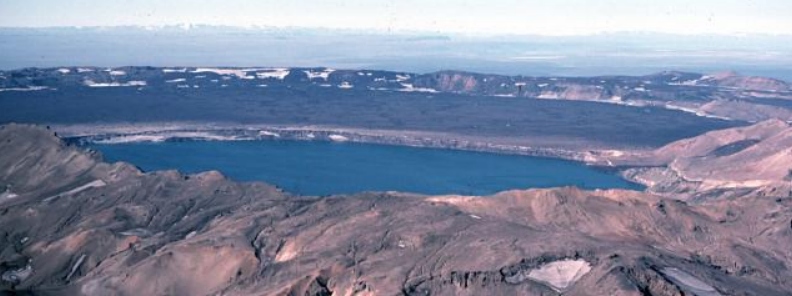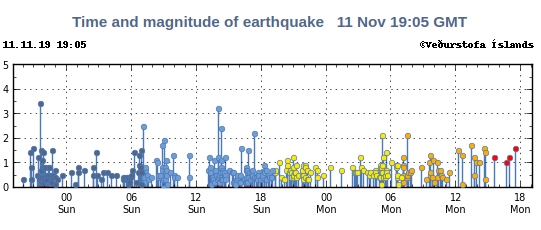Earthquake swarm under Askja volcano, Iceland

Hundreds of earthquakes have been registered near the Askja caldera, in an area approximately 10 km (6 miles) east-northeast from the rim, at the depths around 5 km (3 miles) over the past couple of days. The last eruption of this volcano took place in 1961 (VEI 2).
A total of 316 earthquakes were registered in 48 hours to 19:35 UTC on November 11. 270 had magnitudes up to 1.0, 59 up to M2.0, 6 up to M3.0 and 2 over M3.0.
Over 550 small quakes have been recorded during the past five days.
The largest quakes so far were M3.4 (1.6 km / 0.9 miles E of Dreki) and 3.2 (1.8 km / 1.1 miles E of Dreki), on November 9 and 10, respectively. Both were felt by locals.
"This earthquake swarm continues to appear to be only tectonic in nature and there are no signs of magma movement in the shallow levels of the crust on nearby SIL stations. It is not possible to know for sure what is happening in deeper levels of the crust," Jón Frímann Jónsson of Iceland Geology said November 10.


Geological summary
Askja is a large basaltic central volcano that forms the Dyngjufjöll massif. It is truncated by three overlapping calderas, the largest of which is 8 km (5 miles) wide and may have been produced primarily from subglacial ring-fracture eruptions rather than by subsidence. A major rhyolitic explosive eruption from Dyngjufjöll about 10 000 years ago was in part associated with the formation of Askja caldera.
Many postglacial eruptions also occurred along the ring-fracture. A major explosive eruption on the SE caldera margin in 1875 was one of Iceland's largest during historical time. It resulted in the formation of a smaller 4.5-km-wide (2.8 miles) caldera, now filled by Öskjuvatn lake, that truncates the rim of the larger central caldera.
The 100-km-long (62 miles) Askja fissure swarm, which includes the Sveinagja graben, is also related to the Askja volcanic system, as are several small shield volcanoes such as Kollatadyngja. Twentieth-century eruptions have produced lava flows from vents located mostly near Öskjuvatn lake.
The renowned flat-topped Icelandic table mountain Herdubreid, located NE of Askja volcano, was active until the late Pleistocene. (GVP)
Featured image credit: USGS

When was the last time there had been the same level of swam activity, please?